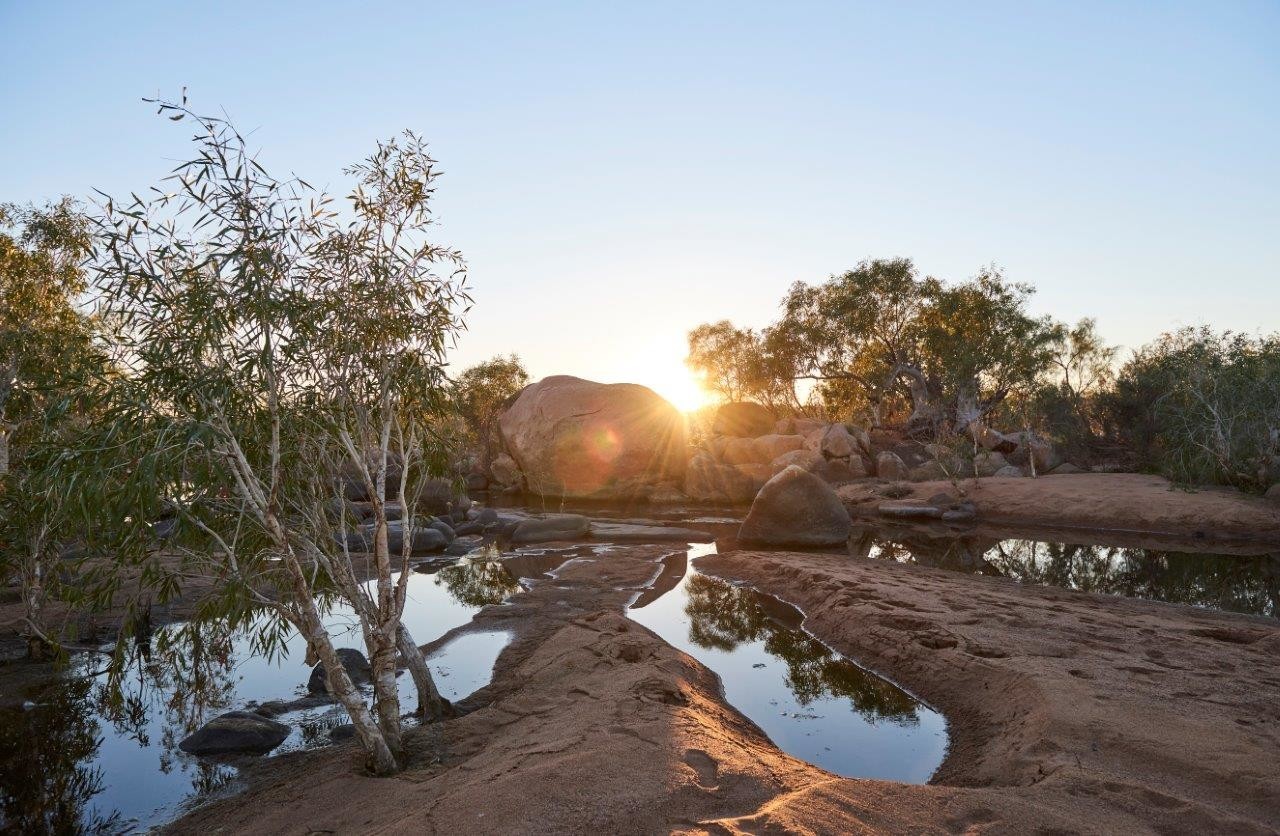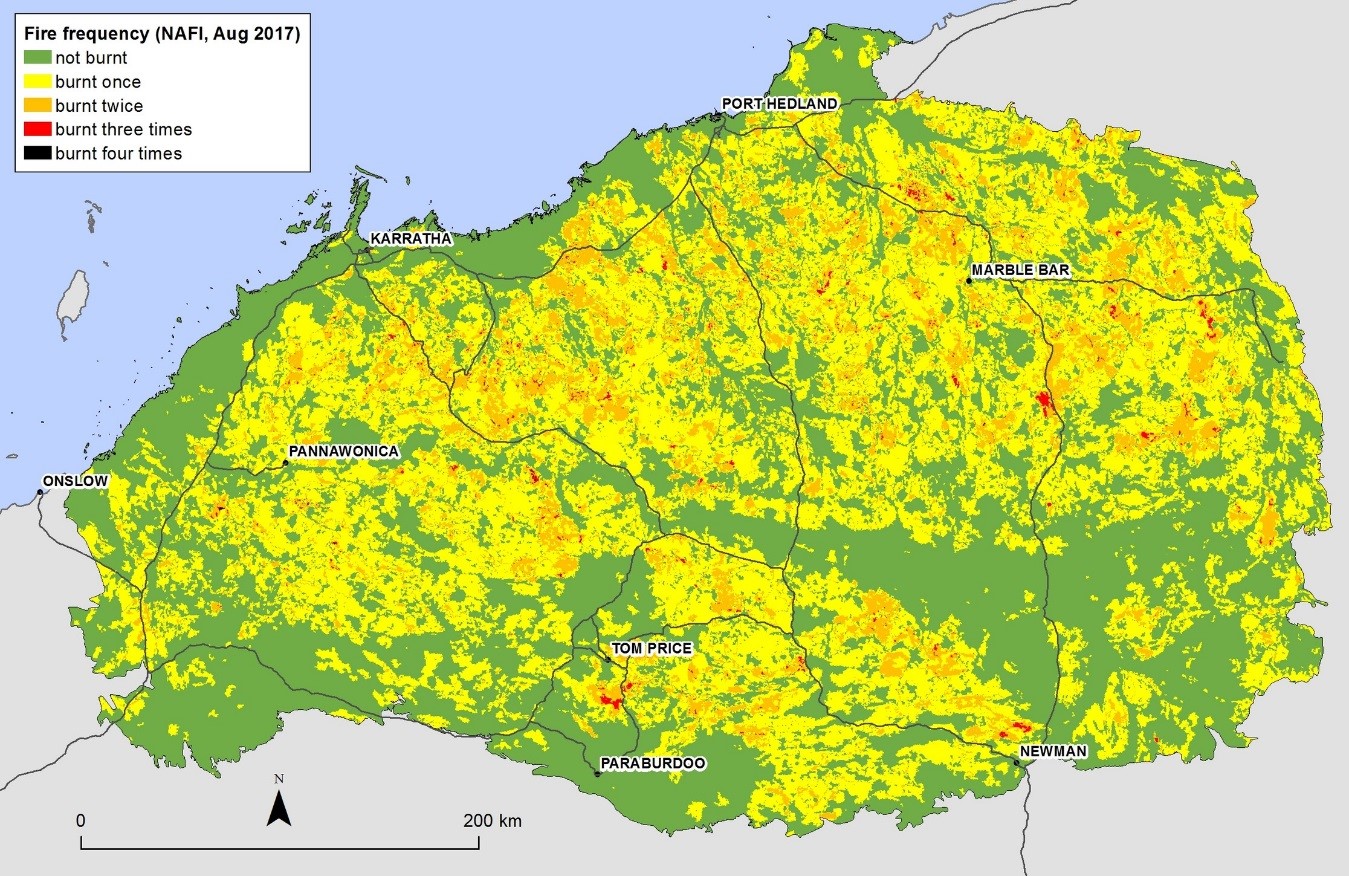Story submitted by Blair Parsons, Science and Programs Leader, Greening Australia–Western Region
Some of you might recall a story shared two years ago by Jo Webb (Rangelands Natural Resource Management, Western Australia) titled “Pilbara Stakeholders Unite in Conservation Planning.”
The Pilbara region of Western Australia has a wealth of biodiversity and is characterised by vast coastal plains and spectacular inland mountain ranges with cliffs and deep gorges. It is also of substantial economic importance to Australia, largely due to mining and export of iron ore. The growing intensity of land use and resource development has placed considerable pressure on the biodiversity of the region.
In our 2016 article, we shared how over 80 stakeholders had begun working together in a facilitated Conservation Action Planning (CAP) process to identify priorities, establish working groups to implement management actions, and maintain a collaborative, long-term conservation strategy for the Pilbara Bioregion.

Riverine habitat is a culturally important and highly productive conservation asset. Photo by Greening Australia.
Since then, important progress had been made on key management issues, including invasive weeds, grazing pressure, feral animals, and fire control, but recently, the group decided it was necessary to further prioritise its strategies. Several months ago, Greening Australia released a new report to guide on-ground action to ensure the long-term health of the diverse Pilbara region.
The report contains a refined set of conservation assets and highlights opportunities for landscape-scale collaboration and partnerships to achieve lasting biodiversity outcomes. The 60 draft strategies identified early in the CAP process were refined to 18 strategies, together with a list for immediate action. These include improving the status of wildlife, such as the Greater Bilby and Northern Quoll; reducing the threat of feral predators, weeds, and inappropriate fires (see image below); and building the capacity of people involved with on-ground work.

Fire frequency in the Pilbara bioregion from 2006 -2017 (NAFI, 2017).
The report also showcases significant conservation projects underway in the Pilbara through a selection of illustrative case studies. These provide examples of predominantly community-led initiatives that are working well and can be used as models for future on-ground action.
This report has already proven its importance in guiding planning for the region. The articulation of ‘investment-ready’ community projects led to the Pilbara CAP, underpinning and guiding key land management initiatives being undertaken in the Pilbara, including via a regional biodiversity offset fund and submissions for state government community stewardship funding. Upon implementation of these projects, the next step in our journey is to ensure that sound monitoring is in place so that we can evaluate our effectiveness and learn from these projects over time.
This report was prepared as part of Pilbara Corridors, a partnership formed between Greening Australia, Rangelands NRM and the Department of Biodiversity, Conservation and Attractions to address biodiversity threats in the Pilbara. The initiative was funded by the Australian Government. You can view the report here.
CCNet Coaches Barry Heydenrych, James McGregor and Todd Berkinshaw originally facilitated the CAP process. Further refinement of strategies and linking with on-ground and government initiatives was led by Barry Heydenrych, assisted by Blair Parsons, Greening Australia’s Science and Programs Leader (Western Region).
For further queries please contact Blair Parsons.
